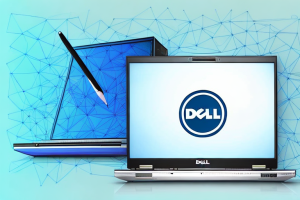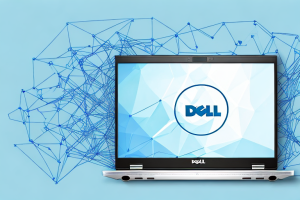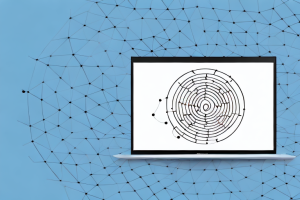How to install Windows 10 on a Dell OptiPlex 9020
8 min read
A dell optiplex 9020 computer with a windows 10 installation process in progress
If you’re looking to upgrade your Dell OptiPlex 9020 to the latest operating system, Windows 10, we’ve got you covered. In this comprehensive guide, we’ll walk you through every step of the installation process and provide tips for optimizing your system’s performance on Windows 10. So, let’s get started!
Before you start: Things to consider
Before taking on such a big task, it’s important to make sure you’re ready. Here are a few things to consider before diving into your Windows 10 installation:
- Do you have enough space on your computer to accommodate Windows 10? You will need at least 20-25 GB of free space on the drive you plan to install it on.
- Do you have all the necessary drivers and software to support Windows 10 on your Dell OptiPlex 9020?
- Do you have enough time to complete the installation? The process can take anywhere from 30 minutes to an hour depending on your computer’s specs and internet speed.
Additionally, it’s important to back up all of your important files and data before beginning the installation process. While the installation process is designed to preserve your files, there is always a risk of data loss or corruption during the upgrade. It’s better to be safe than sorry, so take the time to back up your files to an external hard drive or cloud storage service before proceeding with the installation.
System requirements for Windows 10
Before proceeding with the installation, make sure your Dell OptiPlex 9020 meets the system requirements for Windows 10. Here are the minimum specs for running Windows 10:
- CPU: 1 gigahertz (GHz) or faster
- RAM: 1 gigabyte (GB) for 32-bit or 2 GB for 64-bit
- Hard disk space: 16 GB for 32-bit OS 20 GB for 64-bit OS
- Graphics card: DirectX 9 or later with WDDM 1.0 driver
It is important to note that these are just the minimum requirements for running Windows 10. If you plan on using resource-intensive applications or running multiple programs simultaneously, it is recommended to have a higher CPU speed, more RAM, and additional hard disk space. Additionally, if you plan on using your computer for gaming or video editing, a dedicated graphics card is highly recommended.
How to backup important files and data before installation
It’s always a good idea to backup your important files and data before making changes to your system. Here’s how you can backup your files:
- Save all your important files and documents to an external hard drive, cloud storage service, or USB drive.
- Make sure you have the necessary login credentials for any accounts or services you’ve saved passwords for on your computer.
- Consider creating a system image backup using software such as EaseUS Todo Backup, Macrium Reflect, or Paragon Backup & Recovery. This will allow you to restore your system to its pre-Windows 10 state if anything goes wrong during the installation process.
It’s also important to note that you should backup any software licenses or activation keys for programs you have installed on your computer. This will ensure that you can easily reinstall and activate them after the installation process is complete. You can usually find this information in the settings or help section of the program, or by contacting the software provider directly.
Downloading and preparing the Windows 10 installation media
Now that you’ve backed up your important files and ensured your system meets the system requirements for Windows 10, you’re ready to begin downloading the operating system. Follow these steps to download and prepare the installation media:
- Visit the official Microsoft website to download the Windows 10 installation media creation tool.
- Run the tool and follow the on-screen instructions to download the operating system image to a USB drive or DVD.
- Ensure the USB drive or DVD is properly inserted into your Dell OptiPlex 9020 in preparation for installation.
It’s important to note that the download and preparation process may take some time, depending on your internet speed and the size of the operating system image. Be patient and allow the tool to complete the download and preparation process before attempting to install Windows 10.
Additionally, if you encounter any errors or issues during the download or preparation process, refer to Microsoft’s support website for troubleshooting tips and solutions. It’s always better to address any problems before attempting to install the operating system to avoid potential data loss or system damage.
How to boot from the installation media
Once you’ve prepared the installation media, it’s time to boot your Dell OptiPlex 9020 from it. Follow these steps to do so:
- Restart your computer and continuously press the F12 key to enter the Boot menu.
- Select the option to boot from the USB drive or DVD that contains the Windows 10 installation media.
- Follow the on-screen instructions to begin the installation process.
It’s important to note that if you’re having trouble booting from the installation media, you may need to adjust your computer’s BIOS settings. To do this, restart your computer and continuously press the F2 key to enter the BIOS setup utility. From there, navigate to the Boot tab and ensure that the USB drive or DVD drive is listed as the first boot device. Save your changes and exit the BIOS setup utility, then try booting from the installation media again.
Choosing the language, time, and keyboard preferences during setup
Before installing Windows 10, you’ll be prompted to select your language, time zone, and keyboard preferences. Make sure to choose these preferences correctly in order to avoid any issues with your installation later on.
It’s important to note that once you’ve selected these preferences during setup, they can be changed later on in the Windows settings. However, changing your language preference may require you to download additional language packs, which can take up storage space on your device. Additionally, selecting the correct keyboard preference is crucial for typing efficiently and accurately. Take the time to carefully choose your preferences during setup to ensure a smooth and hassle-free experience with Windows 10.
Understanding the different types of Windows 10 installations: Upgrade vs Clean Install
There are two main ways to install Windows 10: upgrade and clean install. Here, we’ll outline the key differences between the two and which option might be best for you:
- An upgrade installation allows you to keep your files, apps, and settings from your current operating system. This is generally the easier and faster option, but can result in a cluttered system and may not fix any issues you were experiencing with your previous operating system.
- A clean install, on the other hand, completely wipes your hard drive and starts fresh with a new installation of Windows 10. This method allows for a clean slate and often results in better system performance, but requires more time and effort to back up and restore your files and applications.
It’s important to note that before performing either an upgrade or clean install, you should ensure that your computer meets the minimum system requirements for Windows 10. Additionally, if you choose to do an upgrade installation, it’s recommended to uninstall any unnecessary programs or files beforehand to avoid potential compatibility issues. On the other hand, if you opt for a clean install, make sure to back up all important files and applications before proceeding, as they will be permanently deleted during the installation process.
Installing Windows 10 using the upgrade method
If you’ve decided to go with the upgrade installation, follow these steps:
- Choose the option to upgrade your current operating system to Windows 10.
- Follow the on-screen instructions to complete the upgrade.
- After installation, make sure to update your drivers and software to ensure full functionality of your system.
It’s important to note that the upgrade method may not be suitable for all systems. If your current operating system is experiencing issues or is incompatible with Windows 10, a clean installation may be necessary.
Additionally, before starting the upgrade process, it’s recommended to back up all important files and data. While the upgrade process should preserve your files, it’s always better to be safe than sorry.
Installing Windows 10 using the clean install method
If you’ve decided to go with the clean install method, follow these steps:
- Choose the option to perform a custom installation.
- Select the partition where you want to install Windows 10.
- Follow the prompts to complete the installation.
- After installation, restore your backed up files and reinstall your necessary applications.
Before starting the installation process, it’s important to make sure that your computer meets the minimum system requirements for Windows 10. These include a 1 GHz or faster processor, 1 GB of RAM for 32-bit systems or 2 GB for 64-bit systems, and at least 16 GB of free hard drive space.
It’s also recommended to disconnect any external devices, such as printers or USB drives, before starting the installation process to avoid any potential issues. Additionally, make sure to have your Windows 10 product key ready, as you will need it during the installation process.
Choosing the partition where you want to install Windows 10
If you’re doing a clean install of Windows 10, you’ll need to choose which partition to install the operating system on. Make sure to choose the correct partition or you may accidentally overwrite important data. It’s recommended to create a new partition or use a separate hard drive solely for Windows 10.
Configuring your username, password, and privacy settings
After the installation, you’ll be prompted to set up your username, password, and privacy settings. Make sure to create a strong password and adjust your privacy settings according to your preferences.
Installing device drivers and software after installation
After installing Windows 10, you’ll need to install the necessary drivers and software to ensure your Dell OptiPlex 9020 is functioning properly. Visit the Dell support website to download and install the latest drivers for your system. Additionally, reinstall any programs you were previously using before the installation.
Updating Windows 10 to ensure it is running smoothly
It’s important to keep your Windows 10 operating system up to date to ensure it is running smoothly and securely. Check for updates regularly and install them as soon as possible.
Troubleshooting common installation issues
If you encounter any issues during the installation process, don’t panic. Here are a few common issues and their solutions:
- If you’re unable to boot from the installation media, check that it’s properly inserted and try again. You may also need to change the boot order in your BIOS settings.
- If you’re having trouble activating Windows 10, double-check that you have entered your product key correctly and that your internet connection is working properly.
- If you’re experiencing system crashes or errors, try updating your drivers and software, or consider doing a clean install of Windows 10 to start fresh.
Tips for optimizing your Dell OptiPlex 9020 for better performance with Windows 10
Here are a few tips to help you get the most out of your Dell OptiPlex 9020 after installing Windows 10:
- Disable unnecessary start-up programs to speed up boot times.
- Clean up your system by regularly deleting temporary files and old downloads.
- Use a reliable antivirus program to protect your system from malware and viruses.
- Consider upgrading your hardware, such as your hard drive or RAM, for better performance.
By following these steps and tips, you’ll be able to successfully install Windows 10 on your Dell OptiPlex 9020 and optimize your system for better performance. Good luck!


